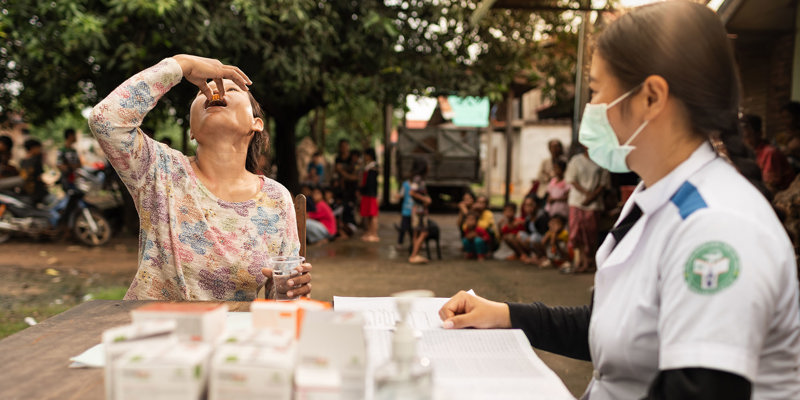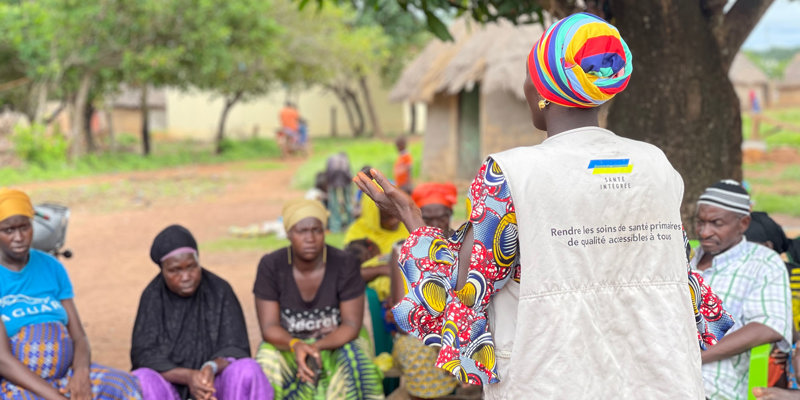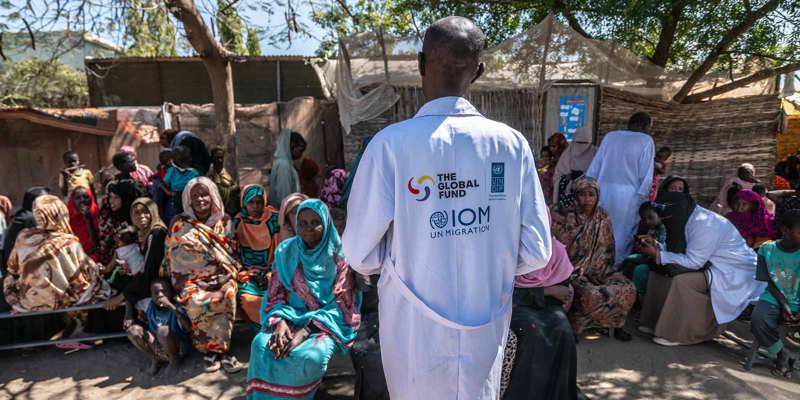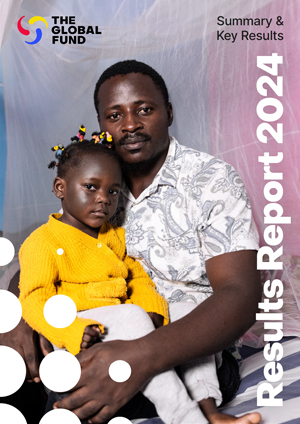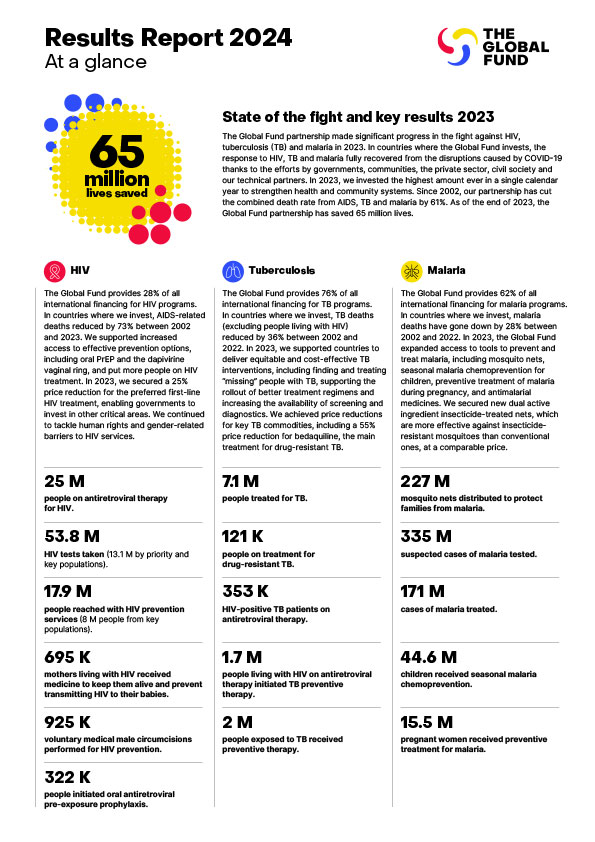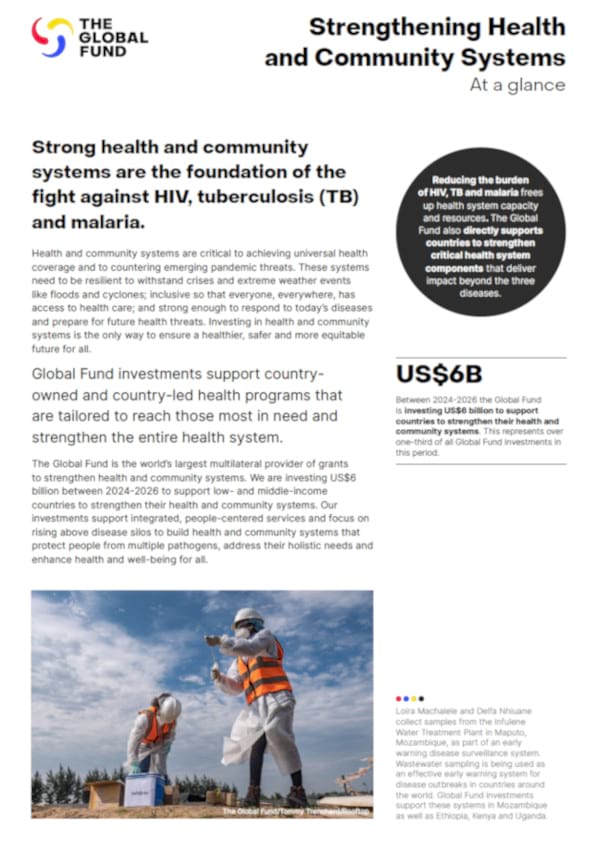GF/B28/DP04
Approved by the Board on: 15 November 2012
Evolving the Funding Model (Part Two)
Building on its previous decision Evolving the Funding Model (GF/B27/DP7), the Board decides the following:
- Allocation Period: Every three years,aligned with the replenishment cycle, the Secretariat shall (i) identify the amount of resources available for allocation to the Country Bands, and (ii) update the country-specific information required to use the allocation formula described below.
- Implementation of Grants: While the allocation period will be aligned with the replenishment cycle, the planning and implementation of grants will be aligned with country planning cycles. The standard period of Global Fund financing for an applicant will be three years, subject to flexibility where deemed appropriate by the Secretariat1.
- Establishment of Country Bands: The Board approves the following approach to determine the composition and structure of Country Bands (groups of countries) for the purposes of allocating resources:
- Principles for Determining Country Bands: The Board approves the following principles for determining Country Bands to ensure focus is placed on countries with the highest disease burden and least ability to pay:
- Sufficient Critical Mass: Each Country Band should have a large enough number of countries and sufficient resources to enable flexibility within it;
- Logical Coherence within Each band: As the incentive funding introduces a need for comparison between applications, countries in each Country Band should be roughly comparable;
- Bands Should Not Be Disease-Specific: Each country should only be part of one Country Band; and
- Simplicity: The system of Country Bands should be easy to communicate and implement.
- Sufficient Critical Mass: Each Country Band should have a large enough number of countries and sufficient resources to enable flexibility within it;
- Composition Criteria for Country Bands: Countries will be allotted to Country Bands based on a composite score generated based on a combination of a country's (i) Gross National Income (GNI) per capita and (ii) disease burden. The principles for these criteria are as follows:
- Transparency: The factors for "ability to pay" and disease burden should be objective and use widely accepted and available data;
- Proportionality: To adjust funding to population size, the disease-burden measure should take into account the scale of affected persons (in terms of absolute numbers, not percentages) by the three diseases in each country; and
- Comprehensiveness: To avoid putting a country in more than one Country Band, the burden metrics for each of the three diseases in a country should be aggregated into a composite disease-burden measure.
- Transparency: The factors for "ability to pay" and disease burden should be objective and use widely accepted and available data;
- Number of Country Bands: Based on these composition criteria, eligible countries2 will be placed in one of four Country Bands based on a combination of: (i) higher or lower disease burden; and (ii) higher or lower income (GNI per capita). One of these Country Bands, corresponding to higher income (GNI per capita) and lower disease burden, will include countries that should finance strategies, projects or plans targeted at most-at-risk populations (MARPs); however, countries in this band with generalized epidemics will not be restricted to MARPs related funding.3.
- Revising the Bands: Prior to each allocation period, the Board may revisit the composition of the Bands, based on recommendations from the SIIC.
- Principles for Determining Country Bands: The Board approves the following principles for determining Country Bands to ensure focus is placed on countries with the highest disease burden and least ability to pay:
- Allocation of Available Funding to Each Country Band: As outlined in GF/B27/DP7, the Board will undertake, on a regular basis, a strategic allocation of resources to Country Bands, and this will serve as the primary pool for funding grants. Such allocation will be based on a forecast of available resources approved by the Finance and Operational Performance Committee (FOPC). The Board approves the following approach to the allocation methodology and formula:
- Principles for Allocating Funding to Country Bands: The Board agrees on the following principles for allocating funding to Country Bands:
- Strategic Focus: Focus funding on countries with the highest needs and least ability to pay;
- Simplicity: The methodology should be easy to communicate to implementers and other stakeholders;
- Transparency: The allocation methodology should use objective and widely accepted and available data;
- Global Reach: The funding distribution should remain global;
- Comprehensive Scope: Taking committed and uncommitted assets into account; and
- Flexibility: The output of the allocation formula is a guiding number, to be adjusted by pre-determined qualitative criteria.
- Strategic Focus: Focus funding on countries with the highest needs and least ability to pay;
- Allocation Formula: The formula for apportioning funding to Country Bands will be based on each country's "ability to pay" (measured by GNI per capita) and disease burden. The SIIC will assess the indicators used in the formula prior to each allocation period, and approve changes deemed appropriate. The specific construction of the formula shall follow the principles below:
- Proportionality: The disease split implied by the allocation formula at the country should be based on each country's share of global disease burden and its ability to pay, applied to each of the three diseases;
- Flexibility: The system should feature flexibility in how to apportion funding between the three diseases and health and community systems strengthening (HCSS) at the country level;
- Sensitivity: Qualitative factors will adjust the initial figures derived from the allocation formula to account for the specific circumstances in each country the allocation formula might not capture; and
- Calibrated Eligibility: Not all countries are eligible for all three diseases, as reflected in current Global Fund policy.
- Proportionality: The disease split implied by the allocation formula at the country should be based on each country's share of global disease burden and its ability to pay, applied to each of the three diseases;
- Disease Split: As previously agreed by the Board (GF/B27/DP7), to apportion resources to the Country Bands at the start of each allocation period, the Board will first split the total projected resources for a given allocation period between the three diseases. As the Board previously agreed (GF/B27/DP7), the Secretariat will under the oversight of the SIIC develop a measure that can be used to estimate disease burden and financial demand across all three diseases for approval by the Board no later than September 2013.
- Apportionment to Country Bands: After making the global disease split described in GF/B27/DP7, the Board will then apportion to each Band a share of the total funding available for the chosen period. These shares will be calculated by adding up the shares produced by the allocation formula for all of the countries in each Band, adjusted for major sources of external financing and, if necessary, a transitional provision to ensure the Global Fund's financial commitments in some countries do not fall below a minimum required level4 over the allocation period. For countries in the band with lower disease burden and higher income, this aggregation of shares will be based on a separate methodology that is currently under development by the Secretariat which recognizes the particular needs of countries in this band including multi-country grants, regional grants, small island states and MARPs. The Secretariat will present this methodology to the SIIC for approval. Although countries' initial funding ranges will be dependent on the outcome of the Global Fund replenishment, countries will be encouraged to apply to the Global Fund for their full quality demand.
- New Resources: Any resources that become available during an allocation period in addition to the initially allocated funding can be used by the Secretariat to (i) increase the amount of funding available in the Country Bands, (ii) fund "unfunded quality demand" (see paragraph 6), or (iii) propose to the SIIC to use some of these resources to fund special initiatives as described in GF/B27/DP7.
- Principles for Allocating Funding to Country Bands: The Board agrees on the following principles for allocating funding to Country Bands:
- Indicative and Incentive Funding: As part of its allocation, the Board will divide the total amount of resources allocated to each Country Band into indicative and incentive funding:
- Purpose ofIndicative Funding: Indicative funding should ensure predictability for applicants, and should defend the Global Fund's aggregate investments in ways that go beyond the Continuity of Essential Services.
- Purpose of Incentive Funding: As the Board previously agreed (GF/B27/DP7), a portion of funds will be used to establish a funding stream to incentivize high impact, well-performing programs and the submission of robust, ambitious requests based on national strategic plans or investment cases. The apportionment of funding to this stream will be substantial so as to ensure sufficient funds are available to motivate full expressions of quality demand
- Determining the Division Between Indicative and Incentive Funding: The Board will decide the required resource levels to meet the applicants' prioritized needs through the indicative funding ranges for the allocation period, and apportion to the incentive funding the difference between prioritized needs and the amount of available assets identified at the time of the allocation. In this way, additional resources mobilized during the given replenishment period may be apportioned to incentive funding. Additional principles to guide the division between indicative and incentive funding, including a final definition of prioritized needs, will be approved by the Board at its Twenty-Ninth Meeting, based on recommendations of the SIIC.
- Access to Funding: The access to funding process will be based on country dialogue and reviews where the Global Fund is part of joint country-led processes, including within the CCMs and with other relevant partners, and will result in the development of a Concept Note.
- Access to Indicative Funding: The determination of indicative funding ranges will be supplemented by qualitative factors including, but not limited to, the following:
- Major sources of external financing;
- Minimum funding levels;
- Willingness to pay;
- Past program performance and absorptive capacity;
- Risk; and
- Increasing rates of new infections in lower prevalence countries.
- Access to Incentive Funding: The Secretariat will develop the process and methodology for awarding incentive funding. Prior to the full implementation of the new funding model, the Secretariat will present to the SIIC for approval this methodology, which shall conform to the following principles:
- Ambition: Additional funding should foster quality expressions of full demand to address the totality of the response to a disease;
- Strategic Focus: Additional funding should reward robust National Strategies and investment cases, and well-performing programs with a potential for increased, quantifiable impact;
- Alignment: The processes for awarding additional funding should ensure that applicants can access funding aligned to national planning cycles, by avoiding unintended incentives to apply either early or late in an allocation period
- Sustainability: Additional funding should leverage contributions from other sources, including domestic budgets
- Simplicity: The processes for awarding additional funding must minimize complexity and transaction costs for implementers, and avoid disruptions to grant-making; and
- Co-investment or Willingness to Pay: Additional funding should also leverage financing from Governments in implementing countries.
- Access to Indicative Funding: The determination of indicative funding ranges will be supplemented by qualitative factors including, but not limited to, the following:
- Purpose ofIndicative Funding: Indicative funding should ensure predictability for applicants, and should defend the Global Fund's aggregate investments in ways that go beyond the Continuity of Essential Services.
- Managing Unfunded Quality Demand: Since quality demand by countries could exceed the level of resources available, the Secretariat will maintain a register of unfunded quality demand. The Global Fund will prioritize this demand for future funding should additional resources become available, as well as invite other donors to finance this demand directly:
- Prioritizing and Awarding Financing to Unfunded Quality Demand: The Secretariat will determine how to prioritize and award financing to unfunded quality demand and will present this methodology to the SIIC, as appropriate, for approval prior to the full implementation of the new funding model. This methodology for prioritizing and awarding financing to unfunded quality demand shall conform to the same set of principles as set forth in paragraph 5.d.ii above.
***
Notes:
1) Justifications for variations from the three-year standard will be provided to the Board as part of the Secretariat's grant approval requests.
2) Country eligibility will follow existing criteria approved by the Board in the Policy and Eligibility Criteria, Counterpart Financing Requirements and Prioritization of Proposals for Funding from the Global Fund (Twenty-Third Board Meeting Documents, attachment to GF/B23/14), GF/B25/DP16 and B25/ER/05.
